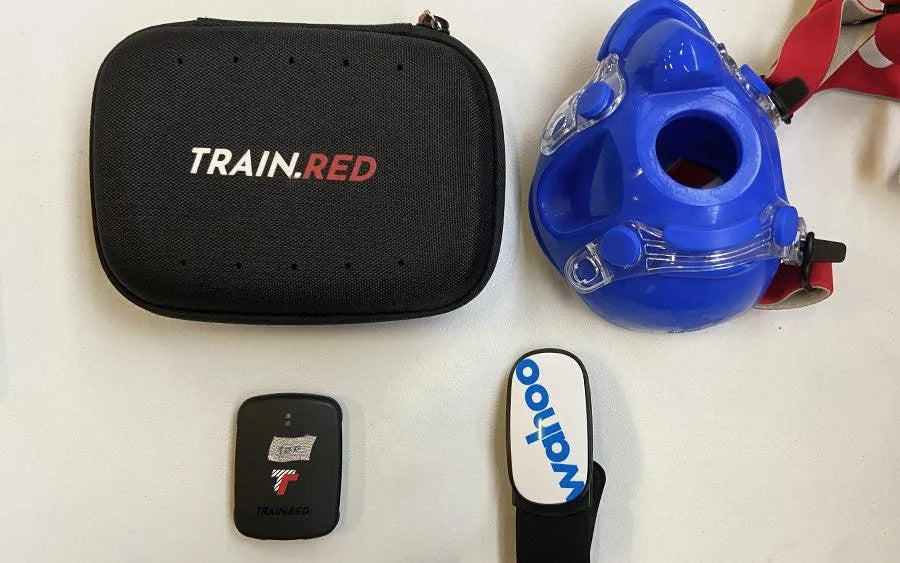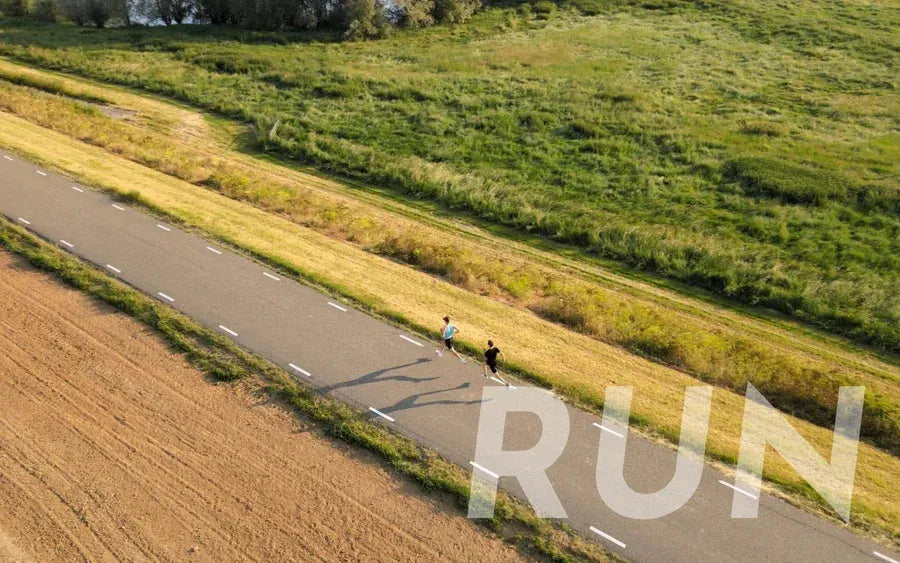It's race day! The hard work is done, it is time to cash out everything you have invested into this one moment where everything comes together. The performance evaluation tests show you're ready, you've got the perfect bike position, you followed the structured workouts listening to your body and kept a close eye on your nutrition. There's not much else left to do before the start.
The warming-up is one of the last, crucial, steps that have a direct outcome on your performance, especially in short races or with fast starts.
Every athlete at any level warms up to improve results in the race, but it's difficult to know how efficient your warming up was. The main goal is to stimulate the mitochondria (the energy factories in your muscle cell) to work at their maximum and activate the nervous system for a more powerful contraction. However, we do not want to drain our bodies too much before the start of the race, in this blog we will show our Train.Red can help you on the most important days of the year, race day!
Why do we warm up?
A good warming-up has the goal to improve performance and prevent injuries! In general, an optimal warming up allows the muscle to bring more oxygen to the muscle, stimulates a better consumption of oxygen, prepares the muscles for intense activity, and drills the athlete mentally for the race. Everybody responds in a different way to internal and external stimuli, heat, altitude, but also more foundational differences such as an incremental warm-up or adding sprints into the mix.
Every small adjustment has an influence on your muscle's performance, some may be beneficial, but you want to know what causes a negative effect of course. The Train.Red FYER sensor can show what is happening inside your muscle during allowing real time adjustment of your warming-up for training and racing.

I get it, but how exactly?
As an athlete, every detail counts when it comes to performance, and improving my warming up can definitely help me achieve my goals. Well, then how do I optimize my warming up?
Over time, many methods have been used to monitor the warming-up: RPE, heart rate monitors, and power meters. The FYER muscle oxygen sensor is a new advanced technology that can provide you with a lot of information. The other systems are focusing mainly on general indicators of how your body is reacting to exercise and do not provide insight into the level of the muscle whereas the muscle is one of the main players during pedaling. Using the Train.Red FYER sensor, it is possible to view in real-time how the muscle is locally behaving and tell you how intense is your muscle working out. Have you started too intense or too easy? Make decisions in real-time and adapt your pedaling pace according to what you see.
Let's start by showing what not to do for a proper warming-up. Below are some examples of warmups that didn't work as they should because they were set at a specific pre-set power. However, they could have been corrected by allowing you to adjust the intensity based on muscle oxygen response. Ideally, our goal will be to get the SmO2 levels as high as possible.

Too intense and short
In this case, we see that the warming-up was too quick and short and did not give the muscles time to adapt before the high-intensity repetition began. The muscle is demanding more oxygen than what it is being supplied the whole time, therefore, the intensity was too high and led to an interruption of the expressed power. The intensity of the exercise was too high to allow for re-oxygenation of the muscle which only took place later on, during the recovery phase.

Unevenness in legs
In another situation, we can see how the warming-up of one of the two legs was not yet sufficient to be able to start the activity since the muscle oxygenation trend had already increased in the left leg, while in the right leg, it would have been appropriate to prolong the activity.
There are a lot of variables to be taken into account during a warming-up and muscle oxygen may not respond as expected. E.g. there may be an asymmetry between the limbs due to contracture or you will need to prolong or shorten some phases of warming up. Only experience will allow you to understand your body's signals.
The ideal Warming-up protocol
Having cleared the goal of the warming-up, we can now suggest and introduce a warming-up protocol.
During the warming-up, we use the “Muscle States” feature in our Train.Red app: we remain in state 2 during this phase waiting for muscle oxygen saturation (SmO2) to have time to adjust before increasing the intensity.

5 steps to an ideal warming-up protocol
Step 1: Let's start with 5-10 minutes of pedaling around 20% of the power at the 2nd SmO2 Break-Point, this means that we will see the muscle oxygenation value first go down, remain constant and then go back up slightly.
Step 2: Increase the intensity for another 5-10 minutes to reach the intensity of the 1st SmO2 Break-Point and see a similar trend.
Step 3: Then you increase intensity leading the SmO2 from the 1st TSI Break-Point up to the 2nd SmO2 Break-Point increasing the intensity every minute (in total 7-8 minutes).
Step 4: 5 minutes of light pedaling below the 1st SmO2 Break-Point followed by three 10-second sprints separated by a 3-minute recovery.
Step 5: It then ends with a 5-minute ride around the 1st SmO2 Break-Point.
Now the muscle oxygen value has risen to levels higher than those at rest and we are ready to line up on the starting line.

What is the optimal warming-up time?
The warming-up should end around 15 minutes before the start, but sometimes it is difficult to respect these times for reasons related to the starting grid. Furthermore, we at Train.Red strongly believe in the individualization of all aspects of training and performance and for this, it is important to find your own warming-up routine, in which the intensity, duration, and timing allow us to unlock your maximum potential.
Therefore, let's not improvise the warming-up before a race, let's try to get to know our body better and take full advantage of the capabilities offered by the NIRS technology made available by Train.Red.

Warming-up in short
Warming up is a fundamental phase to obtain the best possible results in competition and training. Improving warming-up means improving performance in a fairly simple way, gaining 30 Watts at the threshold is much more difficult than performing an effective warming-up protocol.
The Train.Red Muscle Oxygen Sensors allow you to get to know yourself and to adapt your training based on the physiological responses of that moment, in order to reach that performance goal that seemed so far away. Train and find your warming-up that follows the physiological indications of your body to adapt and improve every day.



